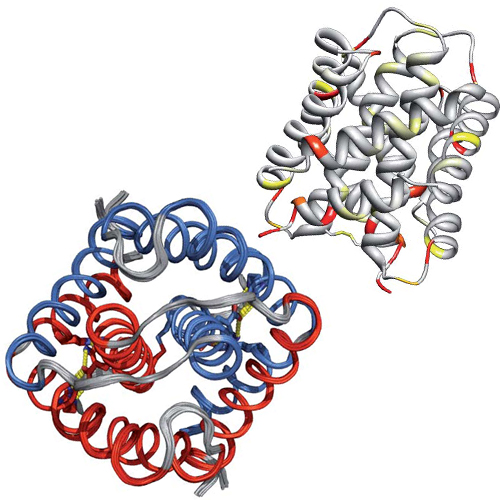A conserved spider silk domain acts as a molecular switch that controls fibre assembly
13-May-2010
Nature, 2010, 465, doi:10.1038/nature08936 published on 13.05.2010
A huge variety of proteins are able to form fibrillar structures, especially at high protein concentrations. Hence, it is surprising that spider silk proteins can be stored in a soluble form at high concentrations and transformed into extremely stable fibres on demand. Silk proteins are reminiscent of amphiphilic block copolymers containing stretches of polyalanine and glycine-rich polar elements forming a repetitive core flanked by highly conserved non-repetitive amino-terminal and carboxy-terminal domains. The N-terminal domain comprises a secretion signal, but further functions remain unassigned. The C-terminal domain was implicated in the control of solubility and fibre formation initiated by changes in ionic composition8,9 and mechanical stimuli known to align the repetitive sequence elements and promote b-sheet formation. However, despite recent structural data little is known about this remarkable behaviour in molecular detail. Here we present the solution structure of the C-terminal domain of a spider dragline silk protein and provide evidence that the structural state of this domain is essential for controlled switching between the storage and assembly forms of silk proteins. In addition, the C-terminal domain also has a role in the alignment of secondary structural features formed by the repetitive elements in the backbone of spider silk proteins, which is known to be important for the mechanical properties of the fibre.











